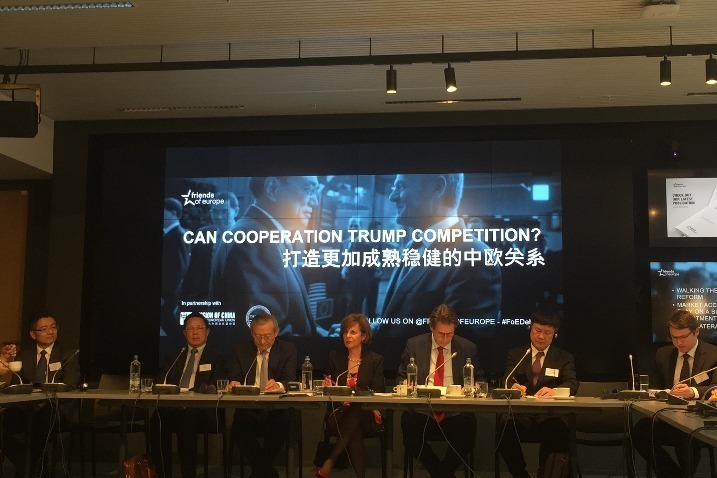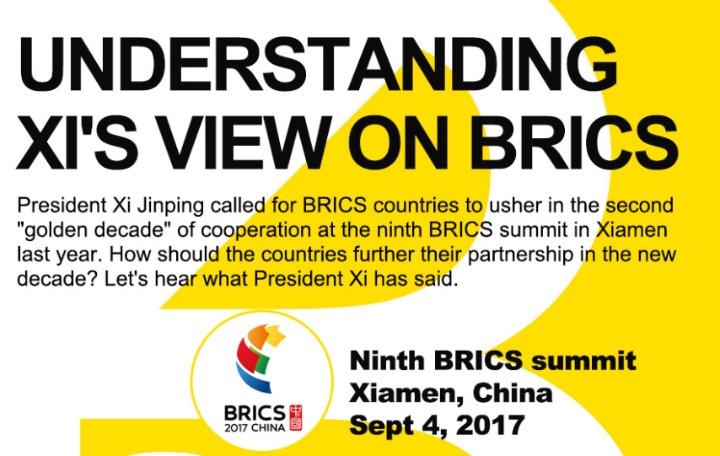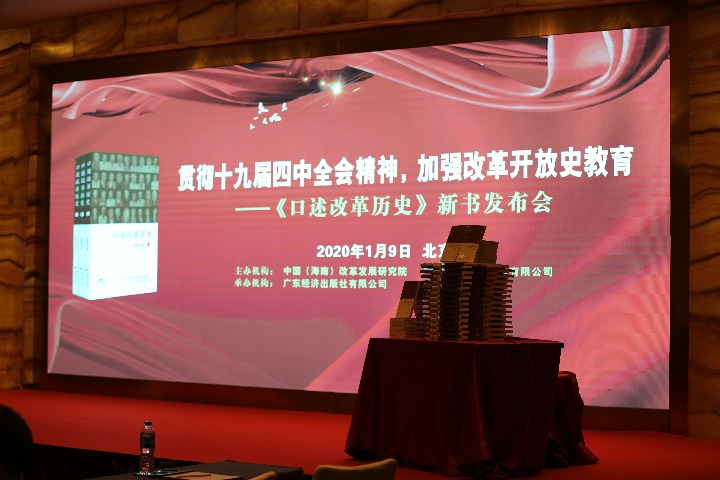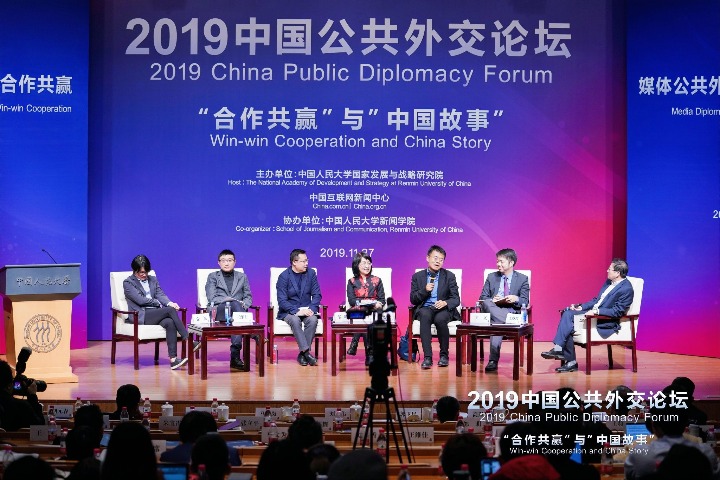Incredible popularity of table tennis
By Jean-Michel Saive |
chinawatch.cn |
Updated: 2019-04-25 17:26
My first memories of China in table tennis go back to the 1980s. I was a young boy, already bitten by the passion of the little white ball; I was interested in everything about table tennis, and I remember the almost total domination by Chinese players in every competition. This was the time of Guo Yuehua and Cai Zhenhua, gold and silver medalist at the World Championship in Novi Sad (1981) and Tokyo (1983), and then came Jiang Jialiang, two times World Champion (in Gothenburg, 1985, and New Delhi, 1987). It is not necessary to add that China was also the best in team competition at the time.
When I played may first World Championship in Tokyo (1983), I was really impressed by the strength of the Chinese team, winning gold in every competition, men, women, teams, doubles and mixed doubles. That is what you call total domination!
From a technical point of view, I remember that the pen-holding style of the Chinese players, their service, their ability to use the diversity of materials gave them a big advantage over European players. At the time, most of the Chinese players were "penholders" and most Europeans "shakehanders". And there was another very important factor: there was only one color of rubber and the defenders perfectly knew how to use it!
The Chinese players were also the best servers in the world, with a lot of variation while Europeans serves seemed less difficult to return. The reason is quite simple: the Chinese players spent hours and hours to perfect their serves. I discovered it when I made my first trip to China, thanks to the decision of the Belgian federation to send young players to the country of table tennis to learn how to train.
I arrived in Tianjin in August 1986. I remember how impressed I was to see all those bicycles, much more numerous than cars on the roads. Going from the place I was staying to the training center was really complicated with a car surrounded by thousands of bicycles!
From the very first day to the last, I was impressed by the Chinese training methods and the duration of the training and the amount of time spent on serves. I also noticed the different style of players: some were right-handers, others were left-handers, some penholders and some shakehanders, and naturally, there were also some defenders.
To give you an idea of the difference between Belgium (and I think it was quite similar in every other European country) and China, our exercises were for more or less 7 or 8 minutes; in Tianjin, it was minimum 15 minutes for every exercise.
A training session with a balls basket in Belgium was no longer than 20 minutes, but it was 2 hours in China. That is a huge difference. I can affirm the Chinese training methods were light years ahead of the European way, and of course, I cannot forget the time spent to practice the service was upu to one hour. That was the confirmation of what I could see in competitions: the quality of the serve of the Chinese players was not a coincidence.
I had the opportunity to stay in Tianjin for two weeks. Of course, I was also impressed by the culture I did not know at this time.
There were a large number of players in the Tianjin training center, and most of them were unknown for me while I was silver medalist at the European Junior Championship: this shows the large number of quality Chinese players. Of course, we all knew the importance of table tennis in China and I will never forget the wonderful invitation I received to celebrate, in Beijing, the 26th anniversary of "ping-pong diplomacy".
Between my first trip to China and this great moment in Beijing, there was a revolution in the world of table tennis and this revolution had a name: Jan-Ove Waldner. Runner up at the World Championship against Jiang Jialiang in New Delhi (1987), he became world champion two years later in Dortmund, after an all-Swedish contest as the other finalist was Jörgen Persson. In Dortmund, Sweden also won the team event, beating China 5-0 in the final. This was like an earthquake on the planet of the white ball and gave hope to other European players that it was possible to defeat the Chinese.
I have no doubt that it was also a big shock in China, and I remember that many Chinese players left the scene although they were still excellent players.
This is the time of European players going to the top of the world rankings; I had the privilege to be one of them when I reached first place in 1994.
This, of course, could have never happened without one person who is very important to me, Wang Dayong, the man I have always called Mr Wang. He arrived in Belgium in 1989, and he brought with him all the science and the technical superiority of the Chinese. The base was solid but he was the one who worked on my game, allowing me to reach the top of the world ranking.
This has really been an incredible story: he has been my coach from 1989 to 2008, but, of course, we still have a very good and strong relationship, I consider him a second father. I really do think that without him I probably would not have made it,
He was one of the people pushing me to qualify for the Olympic Games in Beijing 2008. Although I was approaching 40, it was simply impossible not to try! I remember that at that time we thought it would be the last one, and I could not imagine that I would qualify for one more edition in 2012.
Although it is natural for the Chinese and for everyone who went to China and could feel and live it, it is not always normal for foreigners to realize that China is THE country of table tennis. I have had several occasions to appreciate it and I would like to recount some examples. In the mid-2000s, there was an invitational tournament hosted in Harbin: the draw was broadcast live on television, the players (such as Ma Lin, Jorgen Persson and Segun Toriola) were driven to the hall in a limousine, and there was a red carpet like in Hollywood. That was something totallyunimaginable for us Europeans !Another example was during the Universal exposition in Shanghai, in 2010. A I visited the Belgian pavilion, people recognize med, and more and more people entered the place until the security manager asked me to leave as we were creating a traffic jam! This was quite amazing as I was not among the top players any more as I was 15 years earlier. In 1995, when I returned to Tianjin for the World Championships, a policeman recognized me as I was leaving the airplane, which was a great surprise. But it was only the beginning: during my stay at the hotel, people working there came and knocked on my door to ask for an autograph. And it was quite the same at the restaurant.
I remember China did try a range of new techniques, for example players changing their bats from pimple s to normal rubber and the result was spectacular in the World Championships of 1995: the four semi-finalists were Chinese, and China regained gold in the team competition. More and more Chinese players also changed the way of holding the racket, and we have seen a lot of Chinese shakehanders: Kong Linghui, Wang Liqin, Ma Long and Fan Zhendong ; Xu Xin is one of the last to play as a penholder!
I went back to China a lot of times; 40 times to be exact. When I returned to China, years after the first time, I have seen the economic development in the cities, with a lot of cars and not so many bicycles.
In 2002, as we were playing the rematch of the 2001 World Championship’s final, I asked to spend some time at the training center in Beijing. Then I asked if it was possible to play against the best player at the center ... suddenly, everything around us stopped. All the coaches started to speak among themselves.
I did not know this player, but after advice from the coaches it was like he knew me perfectly; as if he had already played hundred times against me. I realized that one of the secrets of Chinese table tennis was not only knowledge, but the transmission of this knowledge.
Chinese table tennis keeps improving, notably in backhand. Maybe Wang Hao was the first – he was very strong with his backhand then there was Zhang Jike and now there is Fan Zhendong.
Now that I am not a “rival” anymore, I finally got the green light to visit, as an official, the national training center in Beijing. You will not be surprised to know that I was impressed, for example, to discover the hall for the A team and for the B team but also by the fitness center. With my experience as a top player all these years, I know that if you have the right training facilities and the transfer of knowledge, it will be a miracle to beat the Chinese table tennis team.
The author contributed this article to China Watch exclusively. The views expressed do not necessarily reflect those of China Watch.
All rights reserved. Copying or sharing of any content for other than personal use is prohibited without prior written permission.
My first memories of China in table tennis go back to the 1980s. I was a young boy, already bitten by the passion of the little white ball; I was interested in everything about table tennis, and I remember the almost total domination by Chinese players in every competition. This was the time of Guo Yuehua and Cai Zhenhua, gold and silver medalist at the World Championship in Novi Sad (1981) and Tokyo (1983), and then came Jiang Jialiang, two times World Champion (in Gothenburg, 1985, and New Delhi, 1987). It is not necessary to add that China was also the best in team competition at the time.
When I played may first World Championship in Tokyo (1983), I was really impressed by the strength of the Chinese team, winning gold in every competition, men, women, teams, doubles and mixed doubles. That is what you call total domination!
From a technical point of view, I remember that the pen-holding style of the Chinese players, their service, their ability to use the diversity of materials gave them a big advantage over European players. At the time, most of the Chinese players were "penholders" and most Europeans "shakehanders". And there was another very important factor: there was only one color of rubber and the defenders perfectly knew how to use it!
The Chinese players were also the best servers in the world, with a lot of variation while Europeans serves seemed less difficult to return. The reason is quite simple: the Chinese players spent hours and hours to perfect their serves. I discovered it when I made my first trip to China, thanks to the decision of the Belgian federation to send young players to the country of table tennis to learn how to train.
I arrived in Tianjin in August 1986. I remember how impressed I was to see all those bicycles, much more numerous than cars on the roads. Going from the place I was staying to the training center was really complicated with a car surrounded by thousands of bicycles!
From the very first day to the last, I was impressed by the Chinese training methods and the duration of the training and the amount of time spent on serves. I also noticed the different style of players: some were right-handers, others were left-handers, some penholders and some shakehanders, and naturally, there were also some defenders.
To give you an idea of the difference between Belgium (and I think it was quite similar in every other European country) and China, our exercises were for more or less 7 or 8 minutes; in Tianjin, it was minimum 15 minutes for every exercise.
A training session with a balls basket in Belgium was no longer than 20 minutes, but it was 2 hours in China. That is a huge difference. I can affirm the Chinese training methods were light years ahead of the European way, and of course, I cannot forget the time spent to practice the service was upu to one hour. That was the confirmation of what I could see in competitions: the quality of the serve of the Chinese players was not a coincidence.
I had the opportunity to stay in Tianjin for two weeks. Of course, I was also impressed by the culture I did not know at this time.
There were a large number of players in the Tianjin training center, and most of them were unknown for me while I was silver medalist at the European Junior Championship: this shows the large number of quality Chinese players. Of course, we all knew the importance of table tennis in China and I will never forget the wonderful invitation I received to celebrate, in Beijing, the 26th anniversary of "ping-pong diplomacy".
Between my first trip to China and this great moment in Beijing, there was a revolution in the world of table tennis and this revolution had a name: Jan-Ove Waldner. Runner up at the World Championship against Jiang Jialiang in New Delhi (1987), he became world champion two years later in Dortmund, after an all-Swedish contest as the other finalist was Jörgen Persson. In Dortmund, Sweden also won the team event, beating China 5-0 in the final. This was like an earthquake on the planet of the white ball and gave hope to other European players that it was possible to defeat the Chinese.
I have no doubt that it was also a big shock in China, and I remember that many Chinese players left the scene although they were still excellent players.
This is the time of European players going to the top of the world rankings; I had the privilege to be one of them when I reached first place in 1994.
This, of course, could have never happened without one person who is very important to me, Wang Dayong, the man I have always called Mr Wang. He arrived in Belgium in 1989, and he brought with him all the science and the technical superiority of the Chinese. The base was solid but he was the one who worked on my game, allowing me to reach the top of the world ranking.
This has really been an incredible story: he has been my coach from 1989 to 2008, but, of course, we still have a very good and strong relationship, I consider him a second father. I really do think that without him I probably would not have made it,
He was one of the people pushing me to qualify for the Olympic Games in Beijing 2008. Although I was approaching 40, it was simply impossible not to try! I remember that at that time we thought it would be the last one, and I could not imagine that I would qualify for one more edition in 2012.
Although it is natural for the Chinese and for everyone who went to China and could feel and live it, it is not always normal for foreigners to realize that China is THE country of table tennis. I have had several occasions to appreciate it and I would like to recount some examples. In the mid-2000s, there was an invitational tournament hosted in Harbin: the draw was broadcast live on television, the players (such as Ma Lin, Jorgen Persson and Segun Toriola) were driven to the hall in a limousine, and there was a red carpet like in Hollywood. That was something totallyunimaginable for us Europeans !Another example was during the Universal exposition in Shanghai, in 2010. A I visited the Belgian pavilion, people recognize med, and more and more people entered the place until the security manager asked me to leave as we were creating a traffic jam! This was quite amazing as I was not among the top players any more as I was 15 years earlier. In 1995, when I returned to Tianjin for the World Championships, a policeman recognized me as I was leaving the airplane, which was a great surprise. But it was only the beginning: during my stay at the hotel, people working there came and knocked on my door to ask for an autograph. And it was quite the same at the restaurant.
I remember China did try a range of new techniques, for example players changing their bats from pimple s to normal rubber and the result was spectacular in the World Championships of 1995: the four semi-finalists were Chinese, and China regained gold in the team competition. More and more Chinese players also changed the way of holding the racket, and we have seen a lot of Chinese shakehanders: Kong Linghui, Wang Liqin, Ma Long and Fan Zhendong ; Xu Xin is one of the last to play as a penholder!
I went back to China a lot of times; 40 times to be exact. When I returned to China, years after the first time, I have seen the economic development in the cities, with a lot of cars and not so many bicycles.
In 2002, as we were playing the rematch of the 2001 World Championship’s final, I asked to spend some time at the training center in Beijing. Then I asked if it was possible to play against the best player at the center ... suddenly, everything around us stopped. All the coaches started to speak among themselves.
I did not know this player, but after advice from the coaches it was like he knew me perfectly; as if he had already played hundred times against me. I realized that one of the secrets of Chinese table tennis was not only knowledge, but the transmission of this knowledge.
Chinese table tennis keeps improving, notably in backhand. Maybe Wang Hao was the first – he was very strong with his backhand then there was Zhang Jike and now there is Fan Zhendong.
Now that I am not a “rival” anymore, I finally got the green light to visit, as an official, the national training center in Beijing. You will not be surprised to know that I was impressed, for example, to discover the hall for the A team and for the B team but also by the fitness center. With my experience as a top player all these years, I know that if you have the right training facilities and the transfer of knowledge, it will be a miracle to beat the Chinese table tennis team.
The author contributed this article to China Watch exclusively. The views expressed do not necessarily reflect those of China Watch.
All rights reserved. Copying or sharing of any content for other than personal use is prohibited without prior written permission.









